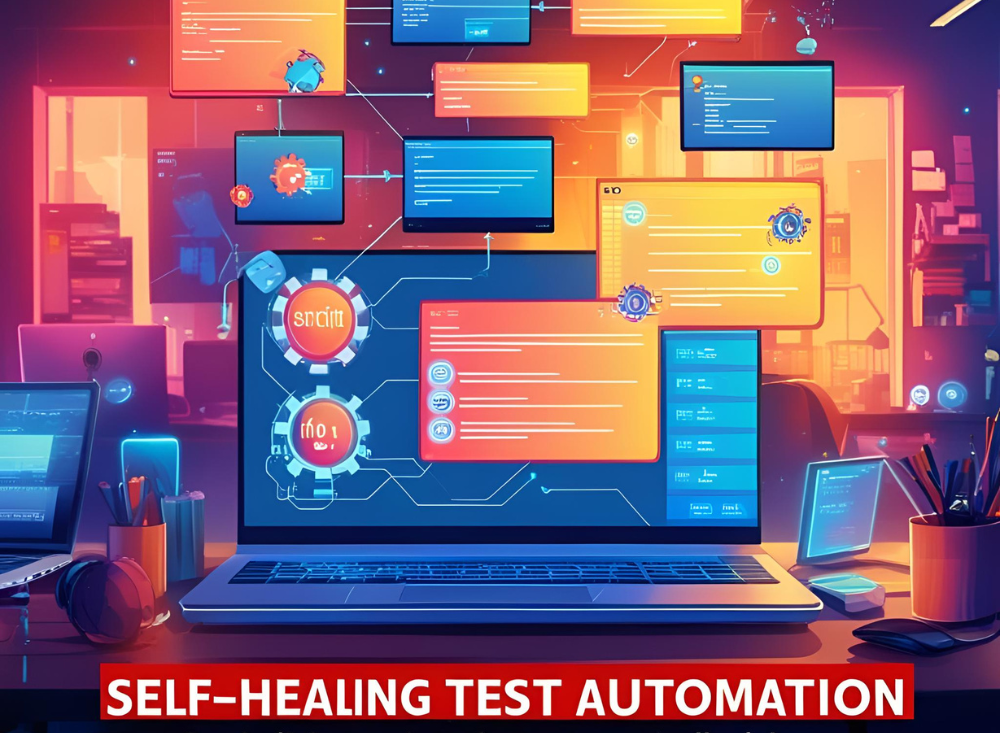
In the fast-paced world of software development, maintaining test automation scripts can be a daunting task. As applications evolve, test scripts often break due to changes in the user interface (UI), functionality, or underlying code. This leads to increased maintenance efforts, delayed releases, and frustrated teams. Enter self-healing test automation — a revolutionary approach that enables test scripts to detect and fix themselves when they encounter issues. This article explores the concept of self-healing test automation, its benefits, and how it is transforming the testing landscape.
What is Self-Healing Test Automation?
Self-healing test automation refers to the ability of test scripts to automatically adapt to changes in the application under test. Using advanced techniques such as machine learning (ML) and artificial intelligence (AI), self-healing systems can identify changes in the application, update test scripts accordingly, and continue execution without manual intervention. This reduces the need for constant script maintenance and ensures smoother testing processes.
How Does Self-Healing Test Automation Work?
Self-healing test automation relies on intelligent algorithms to detect and address issues in test scripts. Here’s how it works:
1.Dynamic Element Identification
- Traditional test scripts rely on static identifiers (e.g., XPath, CSS selectors) to locate UI elements. If these identifiers change, the script fails.
- Self-healing systems use dynamic identification techniques, such as AI-powered element recognition, to locate elements based on multiple attributes (e.g., text, position, role).
2.Change Detection
- Self-healing systems continuously monitor the application for changes, such as updates to the UI or functionality.
- When a change is detected, the system analyzes the impact on the test script and determines the necessary adjustments.
3.Automatic Script Updates
- The system updates the test script to reflect the changes in the application, ensuring that the script remains functional.
- For example, if a button’s ID changes, the system can update the script to use the new ID or an alternative identifier.
4.Execution Continuation
- Once the script is updated, the system resumes test execution without requiring manual intervention.
- This minimizes downtime and ensures that testing progresses smoothly.
Benefits of Self-Healing Test Automation
Self-healing test automation offers several advantages that make it a game-changer for software testing:
1.Reduced Maintenance Effort
- Self-healing systems significantly reduce the time and effort required to maintain test scripts, freeing up resources for other tasks.
2.Faster Feedback
- By automatically fixing broken scripts, self-healing systems enable faster test execution and quicker feedback to developers.
3.Improved Test Stability
- Self-healing systems ensure that test scripts remain stable and reliable, even as the application evolves.
4.Enhanced Test Coverage
- With fewer broken scripts, teams can achieve higher test coverage and identify more defects.
5.Cost Savings
- Reducing manual maintenance efforts lowers the overall cost of test automation.
6.Increased Productivity
- Teams can focus on creating new tests and improving test strategies instead of fixing broken scripts.
7.Scalability
- Self-healing systems are well-suited for large and complex applications, where manual script maintenance would be impractical.
Challenges of Self-Healing Test Automation
While self-healing test automation offers many benefits, it also comes with challenges:
- Complexity: Implementing self-healing systems requires advanced AI/ML capabilities and expertise.
- False Positives: Self-healing systems may occasionally make incorrect adjustments, leading to false positives or missed defects.
- Initial Setup: Setting up self-healing systems can be time-consuming and resource-intensive.
- Dependency on AI: Over-reliance on AI may reduce human oversight, potentially masking underlying issues.
Best Practices for Implementing Self-Healing Test Automation
To maximize the benefits of self-healing test automation, follow these best practices:
1.Start Small
- Begin with a pilot project to evaluate the effectiveness of self-healing systems in your environment.
2.Combine with Human Expertise
- Use self-healing systems to complement human testers, not replace them. Human oversight is still essential for complex scenarios and decision-making.
3.Monitor and Validate
- Continuously monitor the performance of self-healing systems and validate their adjustments to ensure accuracy.
4.Invest in Training
- Equip your team with the skills to work effectively with self-healing systems, including understanding AI/ML concepts and techniques.
5.Focus on High-Impact Areas
- Prioritize self-healing for critical test cases and high-impact areas to maximize ROI.
6.Regularly Review and Update
- Periodically review and update self-healing algorithms to ensure they remain effective as the application evolves.
Real-World Applications of Self-Healing Test Automation
Self-healing test automation is being used across various industries to improve testing efficiency and reliability:
- E-commerce: Ensuring that test scripts for checkout flows and product listings remain functional despite frequent UI updates.
- Banking and Finance: Maintaining stability in test scripts for transaction processing and account management systems.
- Healthcare: Ensuring reliability in test scripts for patient management systems and telemedicine platforms.
- Gaming: Adapting test scripts to handle frequent updates and new features in gaming applications.
- Enterprise Software: Scaling test automation for large, complex systems with frequent changes.
Conclusion
Self-healing test automation represents a significant leap forward in the world of software testing. By enabling test scripts to detect and fix themselves, it reduces maintenance efforts, improves test stability, and accelerates feedback cycles. While challenges like complexity and false positives exist, the benefits far outweigh the drawbacks when implemented correctly.
To get started with self-healing test automation, focus on combining AI-powered systems with human expertise, monitoring performance, and investing in training. By embracing this innovative approach, you can transform your testing process, deliver high-quality software faster, and stay ahead in the competitive landscape of software development. The future of test automation is here — embrace it and thrive!